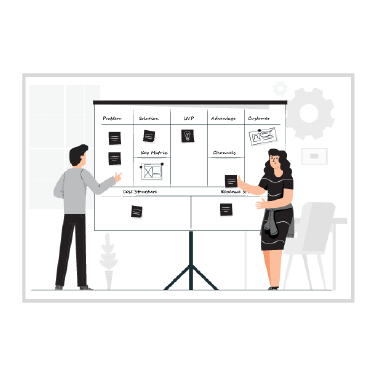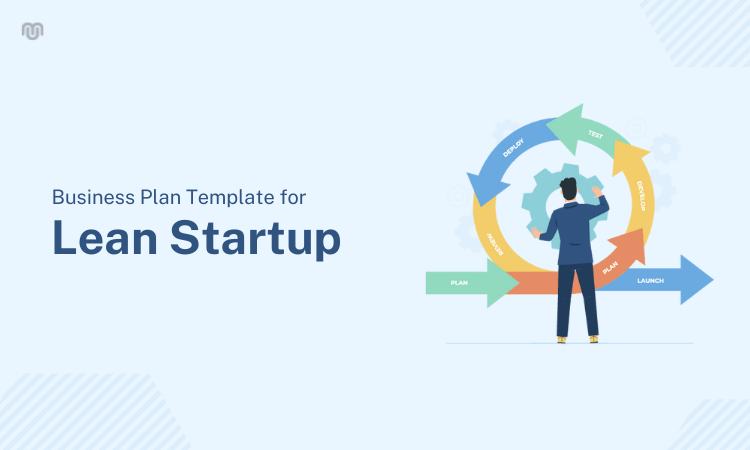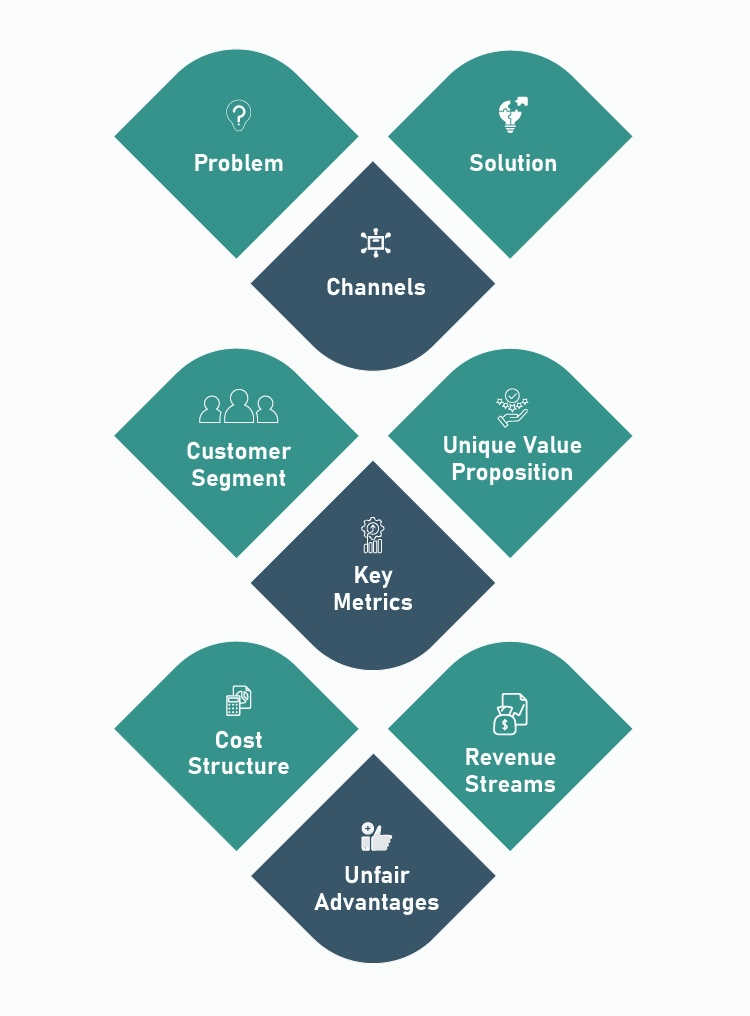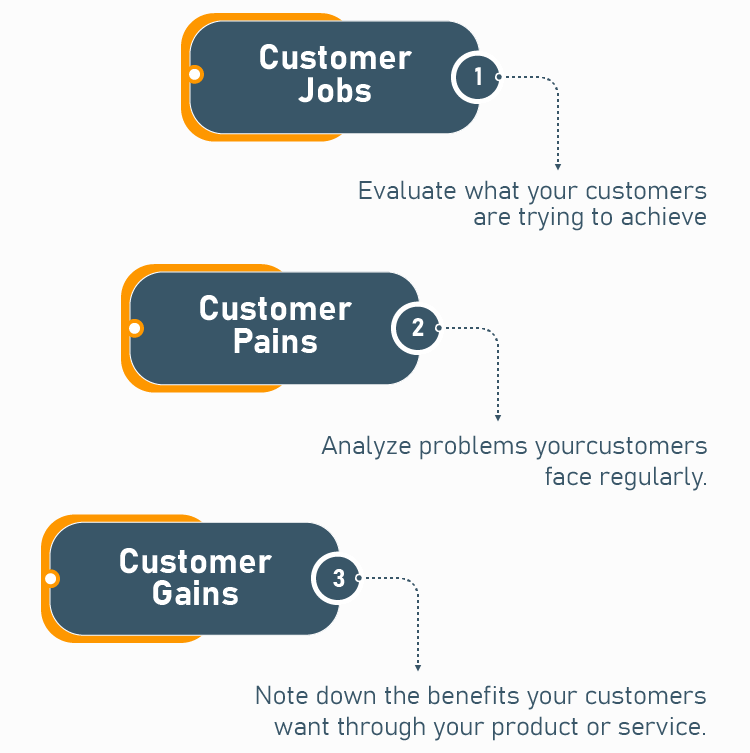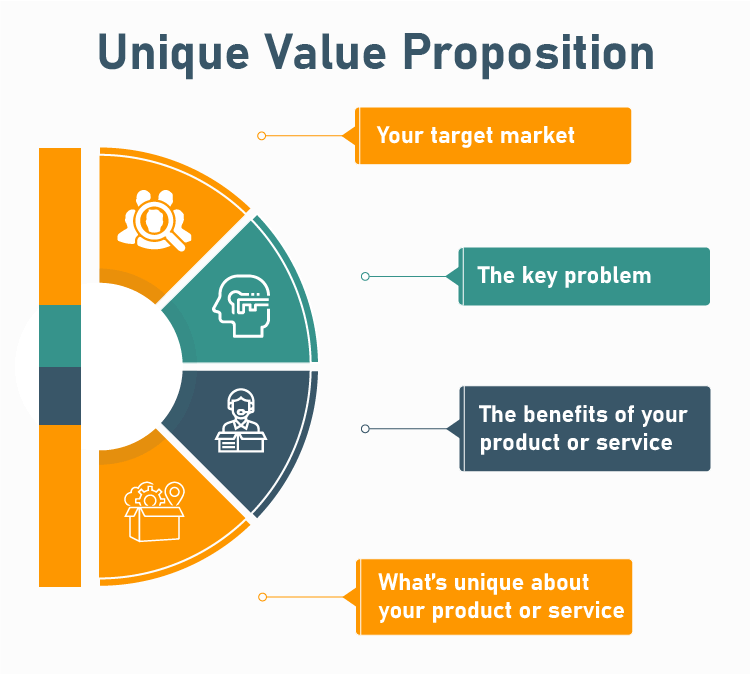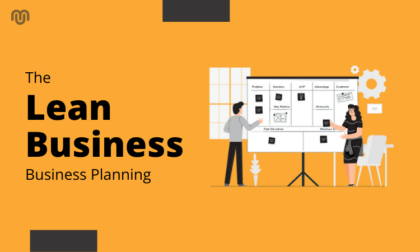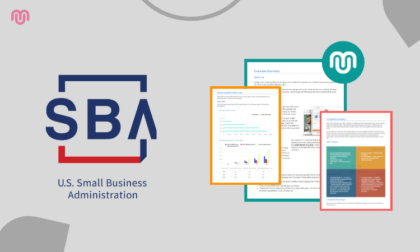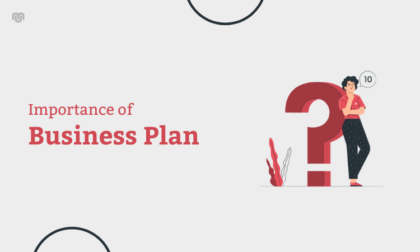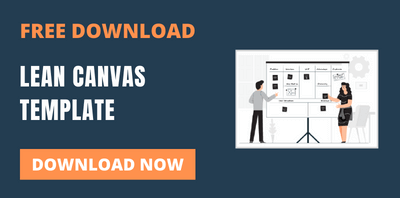Are you looking for a simple business plan template? Let me tell you simplicity is a great policy and one also said:
Only great minds can afford a simple style”
Write only what they want to read: Your end readers (i.e. investors) don’t have time to read your 40-page-long business plan, So let’s focus on what they want.
Let’s build your business plan with the help of a lean canvas proposed by Ash Maurya.
We are going to use 9 building blocks of the lean canvas each as a chapter of our business plan template.
So far, When you plot your plan using a lean business plan template, this template is also called a one-page business plan.
We follow a customer-centric approach in order to start writing our business plan. So here is the business plan outline:
1. Problem
You need to write this chapter along with the customer segment. Because customers and problems are very associated with each other.
Ask yourself: Which are the top 3 problems are you willing to solve with your business idea?
Your business idea is worthless if it’s not solving someone’s problems. So let’s start writing from this chapter.
In this chapter describe at least the top 3 problems you are going to solve with your business idea, and the pain or strongest frustrations that your potential customers have.
The best way to describe the problem is in terms of the jobs customers need to do, what they’re ultimately trying to reach and what’s the pain or the frustration they feel. Possibly with a concise sentence.
Read the next topic about how to write a customer segment chapter to identify customer pains, to understand customer Jobs.
Please make sure that you write problems in a way that anyone completely unaware of what the business is about is being able to understand. Avoid technical terms or single words like “time“, or “price“, as these will be very hard to understand for external people and are not really explaining what is the frustration.
-
Existing Alternative
Ask yourself: List How these problems are solved today?
For your future business, these are your current competitors. To solve their problems customers may be trying through alternatives like a single service, or through a combination of them, or even through basic and alternative techniques, and for some time all these services are failing them for some reason.
Along with this section, you can also list your potential competitors this will help you with your competitor analysis.
2. Customer Segment
In order to write this chapter in a business plan template, Here we have to understand who are the target customers,
To Identify target customers, Ask yourself the following two questions:
- Who are we creating value for in our business model?
- Who are our most important customers?
Client Segments define the classes of organizations or people you aim to achieve or function with. Every company needs profitable customers so as to survive.
After identifying your customers here are the steps to write this chapter:
-
Types of Customer Segments
- Mass Market
- Niche Market
- Segmented
- Diversified
- Multi-Sided Platforms/ markets
-
Creating a Customer Profile
The customer profile defines the customer segment more clearly for your company by understanding the customer’s jobs and assessing the customer’s pains and gains.
Customer Jobs: Now understand what customers are trying to achieve in their personal and professional lives that are called their job. And our products or services are going to make their job easy that’s called our solution, To understand customer jobs let’s categorize those as follows:
- Functional Jobs
- Social Jobs
- Personal/ Emotional Jobs
- Supporting Jobs
While evaluating jobs it is also important to identify Job Context and the Importance of the job.
Various tasks will maintain varying levels of significance in the eyes of the customer depending on their effect and the customer’s priorities.Customer Pains: What are the circumstances which prevent the customer from getting a job done or elicit negative emotions before, during, or after a project? The dangers of doing a project or negative results arising from it also fall within the ambit of Customer Pains. We can categorize customer pains as follow:
- Undesired outcomes, problems, and characteristics
- Obstacles
- Risks
- Pain severity
Customer Gains: Customer Gains are the results or benefits that customers want. Some gains will be taken for granted by the customer upon purchasing a product or service, but others might be a surprise for them resulting in customer delight. Gains are of the following types: functional utility, social gains, positive emotions, and cost savings. This is how we can categorize gains :
- Required Gains
- Expected Gains
- Desired Gains
- Unexpected Gains
- Gain relevance
-
Early Adopters
Who do you think feels those pains the most?
It is very important to Identify early adopters because these are the ones that are going to be your first customers and our first business plan template version will be crafted for them.
Moreover, since they are more in need than others of something solving their problems, they will forgive the imperfections or flaws of the early releases.
This would help you better test and collect the actual feedback for your solutions.
3. Unique Value Proposition
How would you describe your business to target customers in just ONE sentence (possibly less than 200 characters long)?
A Unique Value Proposition is a sentence that tells why what you do is different from competitors and why that difference matters to customers.
As the title, itself suggests It describes the unique way you are going to provide value to your customers.
This is the most important box on the canvas and the hardest to get right. It might take years of experience to make that one sentence, It usually combines :
- The target segment
- The key problem
- The key benefits the customers are going to get after having the service/product.
- The special and unique way you will deliver it.
For a problem section, A good template is Who/What and How: “We help (who?) achieve (what benefit?) by doing (How the special and unique way the new business/new product is doing it)”
-
High-Level Concept
How would you briefly describe what you do?
The high-level concept is a single and very short statement that describes your business idea. For example YouTube = Flickr for videos.
That is the so-called “elevator pitch“, and it is important as you’ll use it anywhere: when describing what you do on occasions, once the media wishes to convey what you do, etc. Your upcoming team members, investors, and clients may use it when speaking about your business too.
4. Solution
How would you solve customers’ problems? Outline a possible solution for each problem.
Describe your business idea briefly and in concise sentences that explain what the customer experience is going to be. Make sure you don’t go with the technical way here.
We have already written a problem chapter, Now Match your every solution with its associated problem from the problem chapter. Make one to one association between the problem and the solution.
5. Channels
List your inbound or outbound paths to the customers: How are you going to acquire your customers?
When your product is ready to solve customers’ problems in a unique way, you need to speak loud so customers know that you have the solution for their problems.
Here are examples of some marketing channels: Social media, Paid online advertising, TV ads, Good AdWords, PR, Col Calls, etc.
List all the possible channels are you going to use for your business.
6. Cost Structure
List expected fixed and variable costs to run your business.
The accuracy of costs depends on whether you have an existing business or the business is in just the idea stage. For the idea stage, you have to make all assumptions regarding costs.
Keep this section at last. at a very early stage, you don’t need to write down the numbers.
After validating your idea or solution, you will have more clarity on the actual numbers.
Costs also help you to identify how many customers you need to cover your fixed costs.
Examples of such costs are
- How much will it cost to build a website for your business?
- What is your burn rate?
7. Revenue Streams
List the sources of revenue: how much would you charge your customers for solving their problems?
For early-stage startups, It’s okay you won’t have to put numbers, list the methods and how would you collect revenues.
Define your pricing strategies, how you price your business will depend on the type of model it is, however, it’s quite common for startups to lower their cost, and even offer it for free to gain traction, however, this can pose a few problems.
Learn more about how effectively write the financial section of your business plan and avoid some common mistakes.
8. Key Metrics
List the key numbers that tell you how your business is doing: Identify the metrics to monitor your business performance.
Every business(no matter what industry or size) will have some key performance metrics.
Which are the customers’ actions that you are going to track to define the steps above and monitor your business performance?
To identify the metrics you need to create a customer acquisition funnel, Use Dave McClure’s method for this.
9. Unfair Advantages
A single, clear compelling statement that states why you are different and worth paying attention to.
This section is a little hard to describe, Most of the entrepreneurs are making mistakes while defining this section.
Don’t make the wrong assumption that the unfair advantages and competitive advantages both are the same.
Instead, it has to be something that you already have, cannot be copied or bought, and would require a considerable amount of time for anyone else to build.
An unfair advantage makes you different from anyone else willing to launch the same exact business.
To understand your unfair advantage ask yourself: why do I believe to have more chances to be successful than anyone else?
If you don’t have any such advantages, It’s ok if it’s empty.
